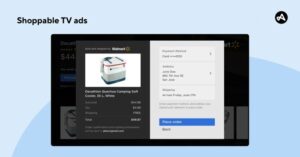
Shoppable Google ad formats are revolutionizing the way businesses engage with consumers online, transforming traditional advertising into immersive shopping experiences. These innovative ad formats allow users to discover, interact with, and purchase products directly from the ad, making the shopping journey much more seamless and enjoyable.
With multiple types of shoppable ads available, businesses can leverage this powerful tool to enhance their visibility and boost sales. Not only do these ads provide an opportunity to showcase products dynamically, but they also foster a more interactive customer experience, driving higher engagement rates and conversions.
Understanding Shoppable Google Ad Formats
Shoppable Google ad formats have revolutionized the way businesses connect with their customers by integrating shopping capabilities directly into advertisements. These formats allow users to browse and purchase products seamlessly, enhancing the overall shopping experience.
Types of Shoppable Google Ad Formats
There are several types of shoppable Google ad formats available for businesses, including:
- Shopping Ads: These ads display product images, prices, and descriptions, directing users to the product page on the retailer’s site.
- Product Listing Ads: These ads showcase multiple products at once, allowing users to compare options easily.
- Shoppable Video Ads: These interactive video ads let users click on products featured in the video to learn more or make a purchase.
- Display Ads: Shoppable display ads have clickable product images, enabling users to shop directly from the ad.
Benefits of Using Shoppable Ads
Shoppable ads offer numerous advantages over traditional ad formats. They increase engagement by allowing users to interact with products directly, driving higher conversion rates. Additionally, these ads provide businesses with valuable insights into customer behavior, helping them refine their marketing strategies.
Enhancing Customer Shopping Experience
Shoppable ads elevate the customer shopping experience by making it more efficient and enjoyable. Instead of redirecting to a separate website, users can explore products, view details, and make purchases within the ad itself, creating a streamlined shopping process that reduces friction.
Implementation Strategies for Shoppable Ads
Setting up shoppable Google ad formats requires careful planning and execution to maximize their effectiveness.
Steps to Set Up Shoppable Google Ad Formats
Businesses can follow these steps to implement shoppable ads:
- Identify target products suitable for shoppable ads.
- Ensure product listings are optimized with high-quality images and detailed descriptions.
- Set up a Google Merchant Center account to manage product data.
- Create shoppable ads through Google Ads by choosing the appropriate format.
- Monitor ad performance and make adjustments as needed.
Checklist for Optimizing Product Listings
To ensure product listings are ready for shoppable ads, consider these key points:
- Use clear, high-resolution images that showcase the product effectively.
- Write compelling and informative product descriptions that highlight key features.
- Include accurate pricing and availability information.
- Utilize relevant s to enhance searchability.
Integrating Shoppable Ads into Existing Marketing Strategies
Businesses should align shoppable ads with their overall digital marketing strategy. This includes:
- Incorporating shoppable ads into social media campaigns to reach a broader audience.
- Using email marketing to promote shoppable ads and drive traffic.
- Analyzing customer data to tailor ad content to specific demographics.
Performance Measurement of Shoppable Ads
To evaluate the effectiveness of shoppable Google ads, businesses must focus on key performance metrics.
Key Metrics for Evaluating Success
Important metrics for assessing shoppable ad performance include:
- Click-through rate (CTR): Measures how many users clicked on the ad.
- Conversion rate: Indicates the percentage of users who made a purchase.
- Return on investment (ROI): Assesses the profitability of ad campaigns.
- Cost per acquisition (CPA): Calculates the cost of acquiring new customers through ads.
Tracking Conversions and ROI
To track conversions and measure ROI effectively, businesses can use tools such as Google Analytics and conversion tracking within Google Ads. These tools help in understanding customer journeys from ad interaction to final purchase.
Tools for Measuring Ad Performance
Several tools assist businesses in measuring ad performance, including:
- Google Analytics: Provides insights into website traffic and user behavior.
- Google Ads Dashboard: Offers detailed performance metrics for ad campaigns.
- Third-Party Analytics Tools: Tools like SEMrush and HubSpot can provide additional insights and benchmarks.
Internet Marketing Integration
Shoppable Google ad formats play a crucial role in comprehensive internet marketing strategies.
Shoppable Ads in Broader Marketing Strategies
These ad formats can be integrated with various marketing channels, including:
- Search engine optimization (): Improve product visibility through optimized listings.
- Social media marketing: Leverage platforms like Instagram and Facebook to showcase shoppable ads.
- Email campaigns: Engage customers directly with targeted shoppable ads.
Successful Campaign Examples
Campaigns that have successfully integrated shoppable ads with affiliate marketing include partnerships where influencers promote products through shoppable links, driving significant traffic and conversions.
Comparison with Other Internet Marketing Tactics
When comparing shoppable ads to other tactics like PPC advertising, it becomes clear they offer a more interactive experience. While PPC drives traffic through clicks, shoppable ads facilitate immediate purchases, providing a unique advantage for e-commerce.
Affiliate Revenue Opportunities
Shoppable ads can serve as a lucrative channel for generating affiliate revenue for businesses.
Generating Affiliate Revenue
By linking shoppable ads with affiliate programs, businesses can earn commissions on sales driven by affiliates.
Linking Shoppable Ads with Affiliate Programs
To effectively link shoppable ads with affiliate programs, businesses should:
- Establish partnerships with relevant affiliates.
- Provide affiliates with shoppable links and promotional materials.
- Track affiliate-driven sales to calculate commissions accurately.
Case Studies of Increased Affiliate Revenue
Businesses that have integrated shoppable ads with affiliate marketing, such as fashion retailers, have reported significant increases in affiliate-driven sales through influencer partnerships and targeted promotions.
Enhancing Online Auctions with Shoppable Ads
Incorporating shoppable ads into online auction platforms presents new opportunities for engagement.
Potential of Shoppable Ads in Auctions
Shoppable ads can enhance online auctions by allowing bidders to view product information and make immediate purchases from the auction listing, driving traffic and increasing bids.
Driving Traffic to Auction Listings
By featuring shoppable ads within auction platforms, businesses can attract users looking for specific products, encouraging them to bid and increasing auction visibility.
Creating a Shoppable Auction Experience
To design a shoppable auction experience, businesses should:
- Integrate shoppable ad formats into the auction interface.
- Ensure product details and bidding information are easily accessible.
- Promote the auction through targeted marketing campaigns.
The Role of Content in Shoppable Ads
High-quality content is vital in creating effective shoppable ads.
Importance of Visuals and Descriptions
Compelling visuals and thorough product descriptions are crucial for attracting customers. Well-produced images can capture attention, while detailed descriptions help inform purchasing decisions.
Content Strategy for Shoppable Ads
A robust content strategy should include:
- Blog posts that highlight products featured in shoppable ads.
- eBooks that provide additional information and context around product offerings.
- Leveraging podcasts and audio streaming to discuss products and promote shoppable links.
Trends in E-Commerce and Shoppable Ads
The e-commerce landscape is constantly evolving, influencing shoppable Google ad formats.
Emerging Trends in E-Commerce
Several trends are shaping the future of shoppable ads, such as:
- Increased mobile shopping: More consumers are shopping via mobile devices, prompting the need for mobile-optimized ads.
- Personalization: Tailored ads based on user behavior and preferences are becoming more effective.
- Augmented reality (AR): Integrating AR into shoppable ads allows customers to visualize products in their own space before purchasing.
Changing Consumer Behavior
Consumer behavior is shifting towards a preference for seamless shopping experiences, with many customers favoring brands that offer quick, easy access to products through shoppable ads.
Future Developments in Shoppable Advertising Technology
As technology advances, shoppable ads are expected to become more interactive and personalized, enhancing their effectiveness and user engagement.
Challenges in Using Shoppable Ads
While shoppable ads provide numerous benefits, they also come with challenges.
Common Challenges Businesses Face
Some challenges include:
- Technical issues related to ad setup and integration with e-commerce platforms.
- Ensuring product data remains accurate and up-to-date.
- Navigating the complexities of ad regulations and compliance.
Solutions for Overcoming Technical Issues
To address technical challenges, businesses should consider:
- Collaborating with IT teams to ensure seamless integration.
- Utilizing available resources and documentation from Google for setup guidance.
- Regularly testing ad formats to identify and resolve issues promptly.
Impact of Regulations on Shoppable Advertising
Businesses must stay informed about regulations affecting shoppable advertising practices to ensure compliance and avoid potential penalties.
Best Practices for Maximizing Shoppable Ads
Implementing best practices can significantly enhance the effectiveness of shoppable ads.
List of Best Practices
To design effective shoppable ads, consider the following:
- Focus on high-resolution images and engaging visuals.
- Craft concise yet informative product descriptions.
- Utilize clear calls-to-action that encourage user interaction.
- Continuously monitor and test ad performance to identify areas for improvement.
Common Pitfalls to Avoid
When using shoppable Google ad formats, businesses should avoid:
- Neglecting mobile optimization, which can lead to poor user experiences.
- Overloading ads with too much information, which can overwhelm potential customers.
- Failing to update product listings, leading to discrepancies between ads and actual inventory.
Importance of Ongoing Testing and Optimization

Regularly testing and optimizing shoppable ads is essential for maintaining their effectiveness. Businesses should analyze performance data to refine ad strategies and meet changing customer preferences.
Outcome Summary
In conclusion, shoppable Google ad formats present a unique opportunity for businesses to connect with consumers in a more meaningful way. By effectively integrating these ads into their marketing strategies, companies can not only increase their sales but also create memorable shopping experiences that resonate with their audience. Embracing these innovative ad formats is key to staying competitive in today’s fast-paced digital landscape.
Q&A
What are shoppable Google ad formats?
Shoppable Google ad formats are interactive advertisements that allow consumers to browse and purchase products directly within the ad itself.
How do shoppable ads improve customer experience?
They streamline the shopping process by allowing users to discover and purchase items without navigating away from the ad, enhancing user engagement.
What types of businesses can benefit from shoppable ads?
Any business with an online store can benefit, particularly those in retail, fashion, beauty, and e-commerce sectors that rely on visual advertising.
Are shoppable ads cost-effective?
Yes, they can be cost-effective as they often lead to higher conversion rates, making the advertising spend more efficient.
How can businesses track the success of their shoppable ads?
Businesses can track metrics like click-through rates, conversion rates, and ROI using analytics tools specifically designed for ad performance monitoring.






